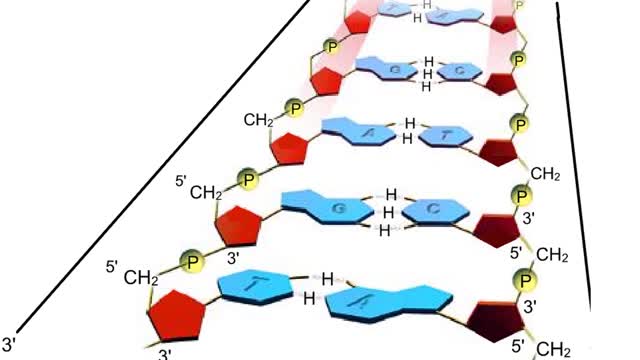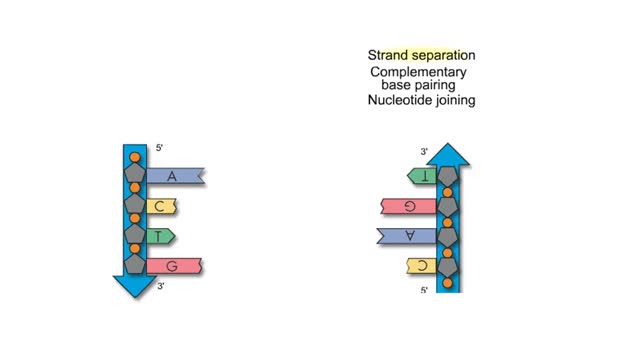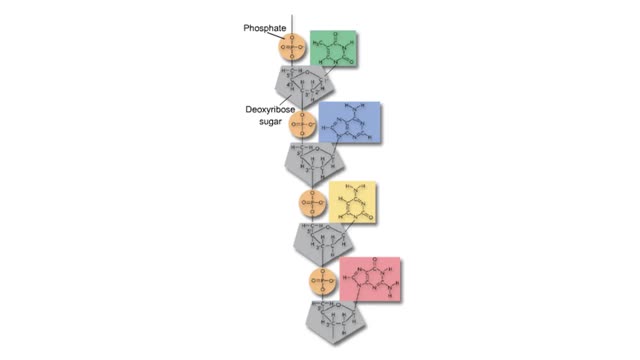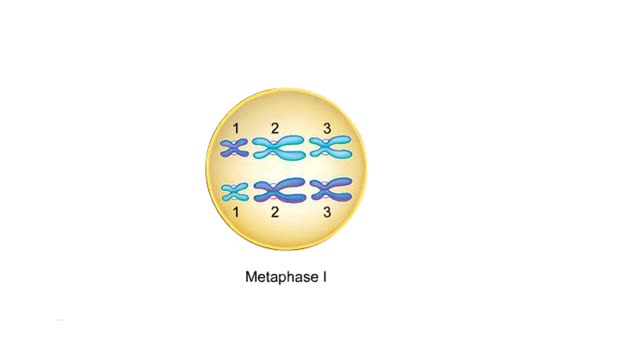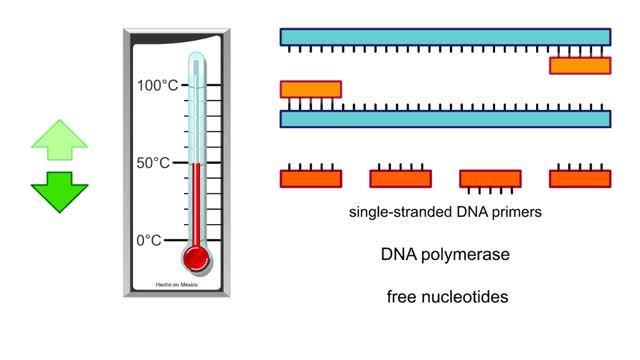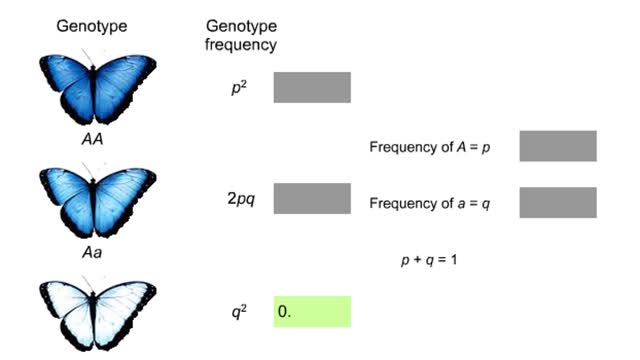Search Results
Results for: 'guanine-cytosine pair'
By: HWC, Views: 5047
A section from a DNA double helix The backbone of each DNA strand consists of alternating deoxyribose sugars and phosphate groups. The two strands run in opposite directions. One runs from the 5' to 3' direction, the other in the 3' to 5' direction. Think of the deoxyribose units o...
Major Elements in Biological Molecules: Nucleic acids
By: HWC, Views: 11082
DNA and RNA are nucleic acids (polymers of nucleotides). Two polymers with complementary nucleotide sequences can pair with each other. This pairing endows nucleic acids with the ability to store, transmit, and retrieve genetic information. Two strands of DNA pair by hydrogen bonding. A compon...
Subunits of DNA And Semi Conservative Replication
By: HWC, Views: 7481
Adenine is a purine with a double-ring structure. In double-stranded DNA, adenine base-pairs with thymine. Guanine is a purine with a double-ring structure. In double-stranded DNA, guanine base-pairs with cytosine. Thymine is a pyrimidine with a single-ring structure. In double-stranded DNA, th...
By: HWC, Views: 10576
First step: strands are separated • Helicase unwinds the DNA double helix at the replication fork • SSBs coat the single strands to prevent reannealing • Polymerase attaches nucleotide at 3' end • Synthesis is in 5' to 3' direction DNA Polymerase: • Only extends nucleic ac...
By: HWC, Views: 9369
This is a cell during metaphase I. For each pair of chromosomes, any gamete produced by this cell could contain either the maternal chromosome or the paternal chromosome. How many different combinations of maternal and paternal chromosomes are possible in the gametes produced by a cell with th...
Polymerase chain reaction PCR - Animation
By: HWC, Views: 5080
Polymerase chain reaction (PCR) is a method that amplifies fragments of DNA. The purpose of PCR is to create copies of a specific region of DNA. To use this technique, researchers must know the base sequences at either end of the region of interest. They use this information to create...
Bond in biological molecules (Ionic, Covalent and Hydrogen bonds)/ How atoms bond?
By: HWC, Views: 8458
Sodium atoms and chloride atoms have unfilled orbitals in their outer shells. The lone electron in the outermost shell of a sodium atom can be pulled or knocked out. This ionizes the atom. It is now a positively charged sodium ion. A chlorine atom has an electron vacancy in its outer shell and...
How to find out if a population is evolving?
By: HWC, Views: 8318
Imagine a butterfly population with a pair of alleles that influence wing color as shown. We will represent the frequency of the dominant allele as p and the recessive allele as q. The Hardy-Weinberg rule describes what happens if a population is at genetic equilibrium—if it is not evolving...
Advertisement



